Blog & Latest Updates
Fly Fishing Articles
Insects by Common Name


> > Another Caddisfly
| Crepuscular | February 5th, 2013, 2:25 pm | |
| Boiling Springs, PA Posts: 923 | Collected from a Central PA Freestone stream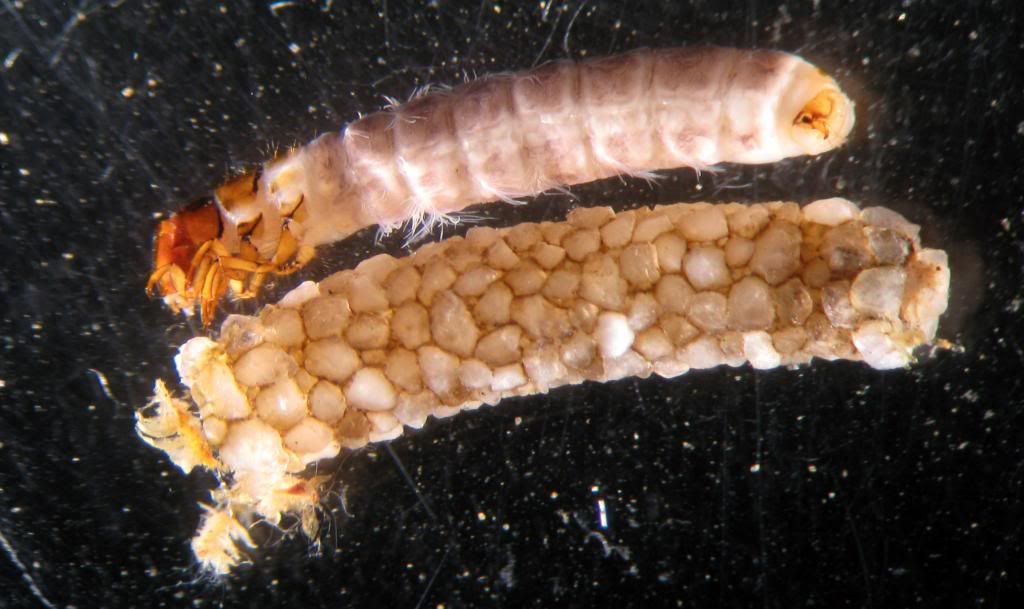  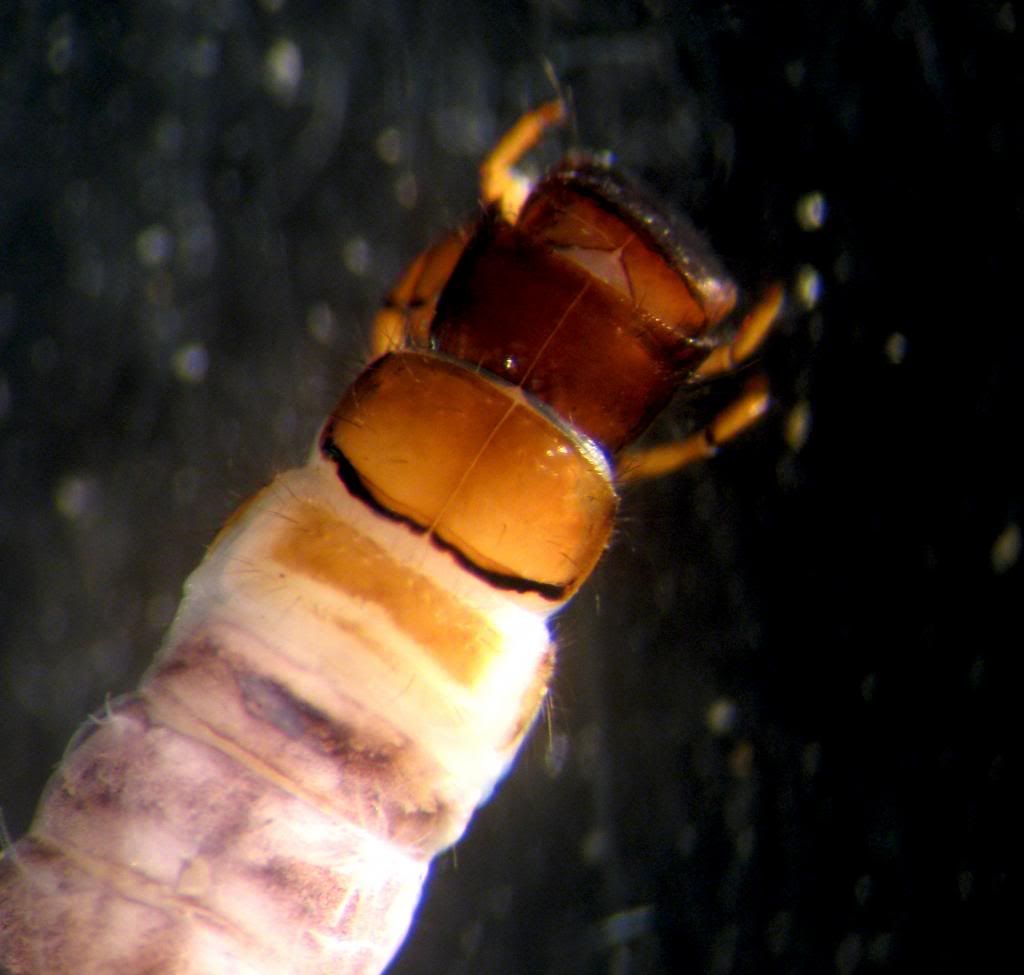 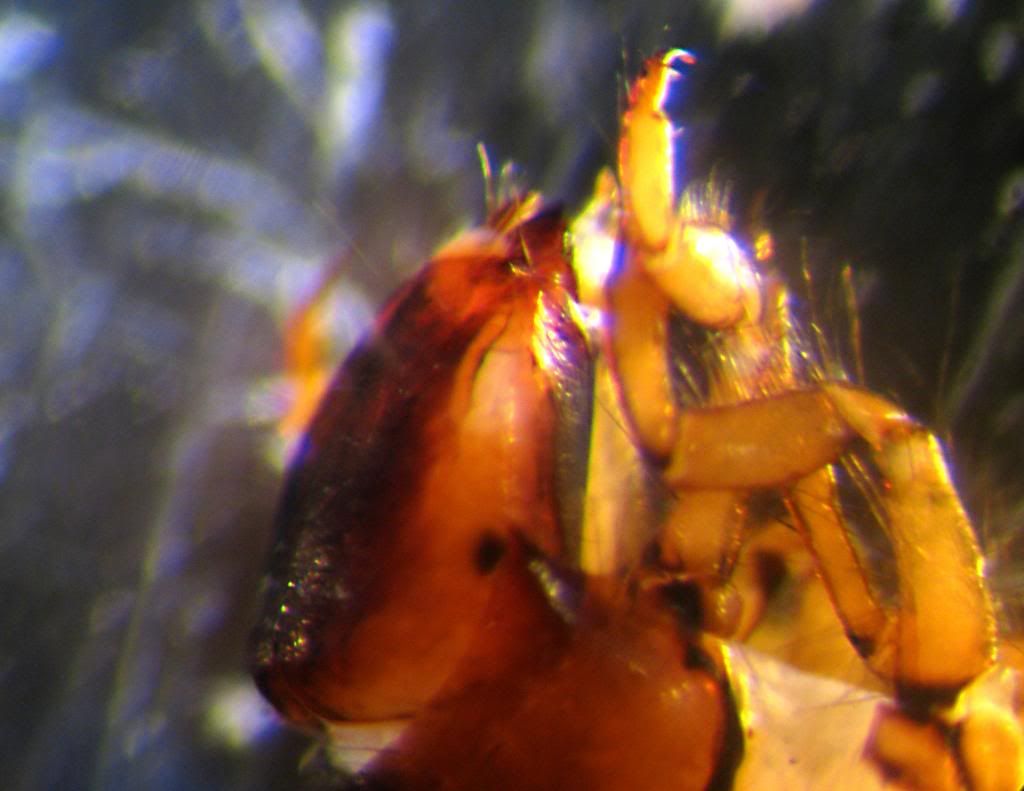   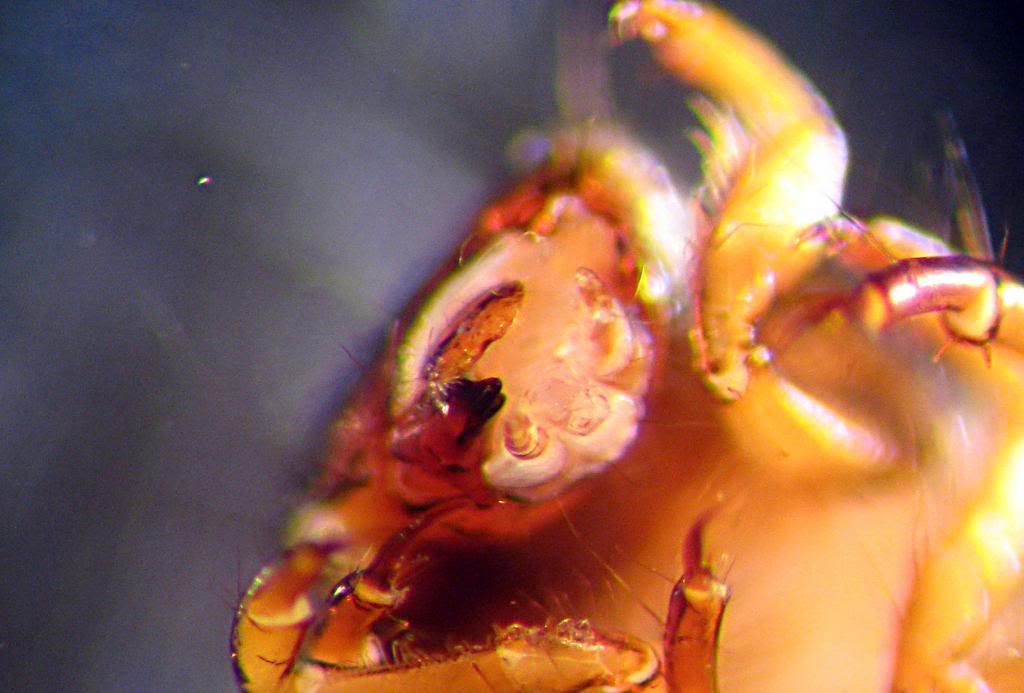   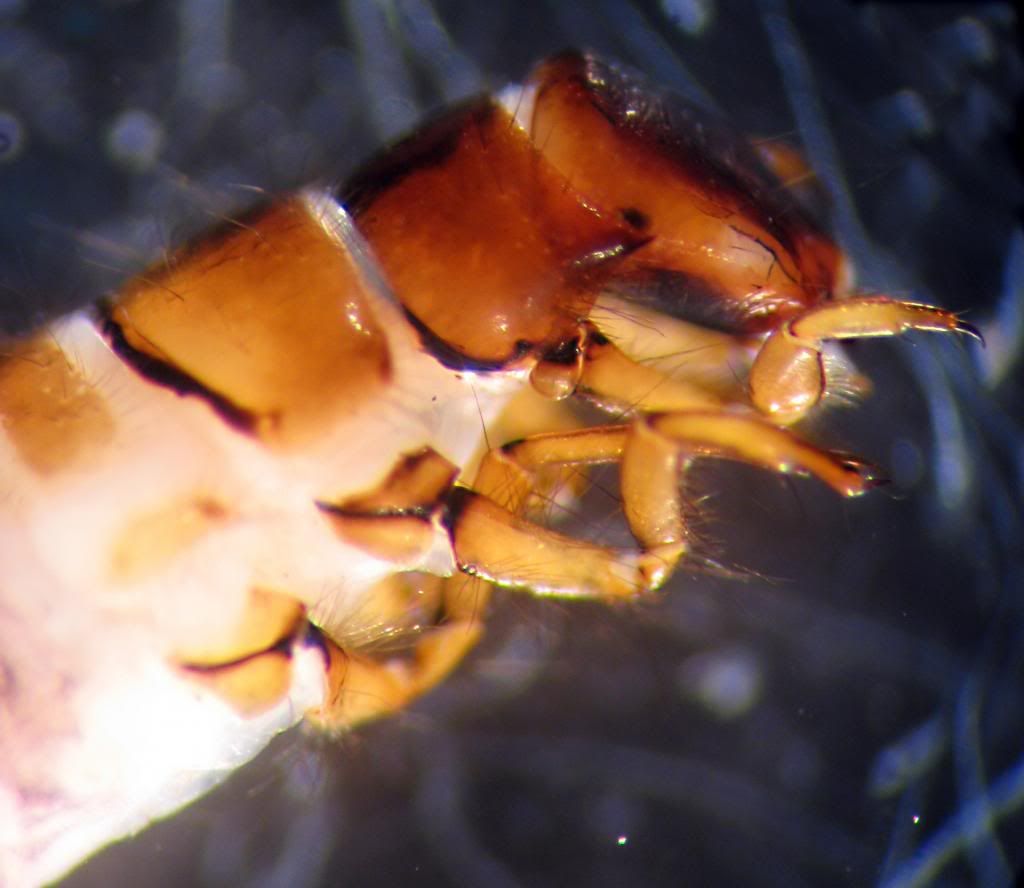 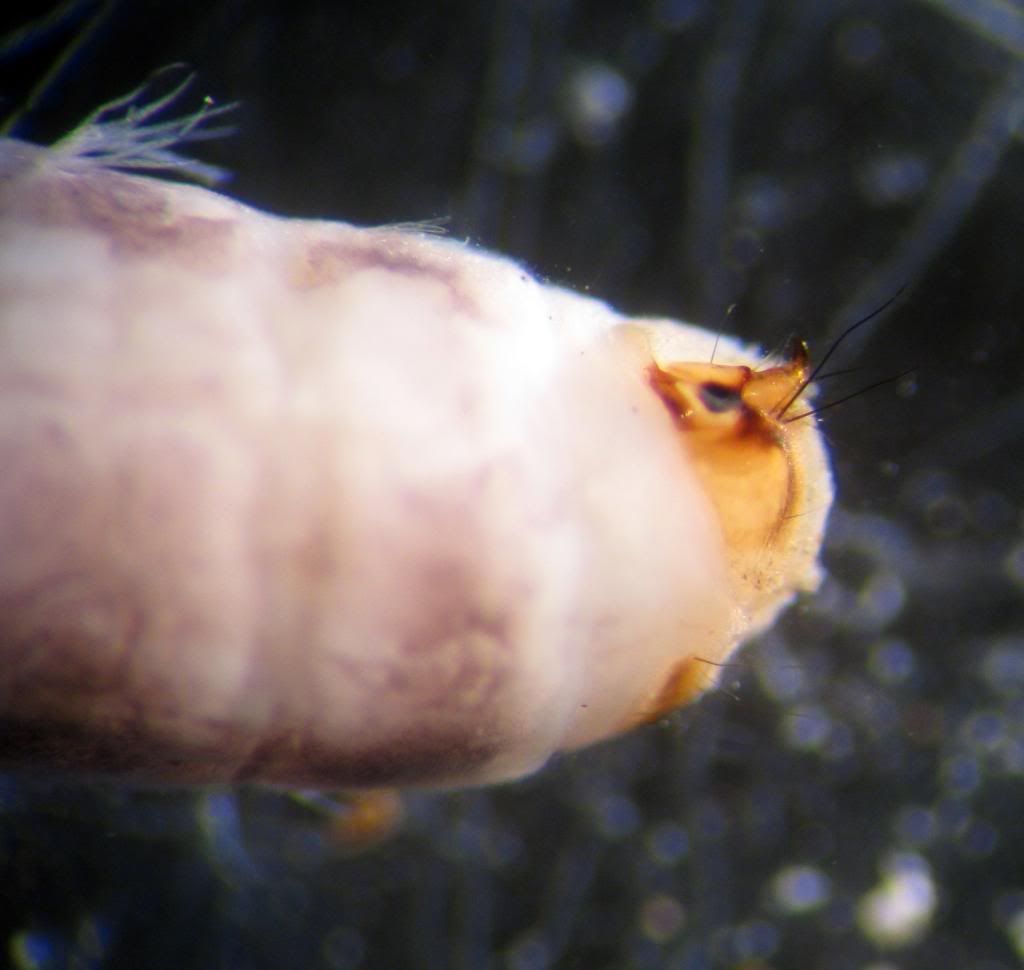 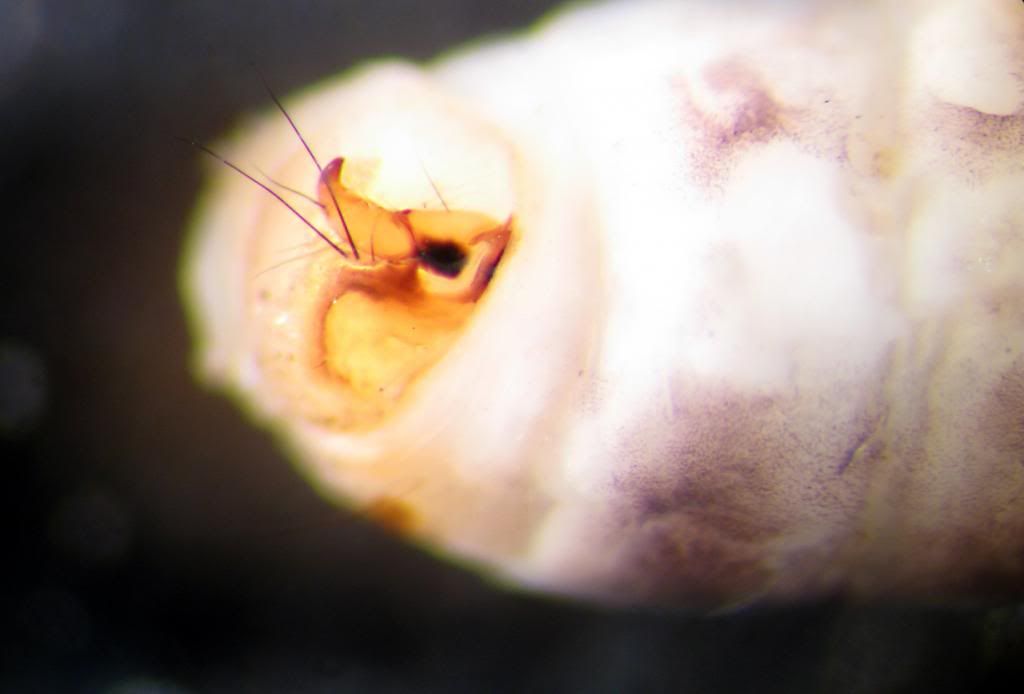   | |
| Oldredbarn | February 5th, 2013, 3:39 pm | |
| Novi, MI Posts: 2608 | Hmmm...I'll go out on a limb here...Maybe Nectopsyche? Spence | |
| "Even when my best efforts fail it's a satisfying challenge, and that, after all, is the essence of fly fishing." -Chauncy Lively "Envy not the man who lives beside the river, but the man the river flows through." Joseph T Heywood | ||
| Taxon | February 5th, 2013, 3:57 pm | |
Site Editor Royse City, TXPosts: 1350 | Hi Eric, My guess would be Odontoceridae Psilotreta. Hopefully Dave will see this post before long, and put our best guesses to rest. :-) | |
| Best regards, Roger Rohrbeck www.FlyfishingEntomology.com | ||
| Creno | February 5th, 2013, 4:06 pm | |
| Grants Pass, OR Posts: 305 | Pretty good pics - It is Psilotreta. The combination of the curved tubular case of consistent sized sand grains, number of gill filaments per cluster and the points on the apicolateral pronotal margins are quite distinctive for this genus. a real clear lateral view of the hind OOPS SHOULD BE MESO (Eric caught my error on this)femur with the setae in focus as well as a good dorsal view of the head setae would clarify some things but I expect this is Psilotreta rossi (another typo? must have been too late at night - should have been rufa - I am sorry for confusion) | |
| Entoman | February 5th, 2013, 4:16 pm | |
| Northern CA & ID Posts: 2604 | Psilotreta. Edit - Whoops! You pretty much got the full roster, Eric! Sometimes you have to be pretty quick around here...:) | |
| "It's not that I find fishing so important, it's just that I find all other endeavors of Man equally unimportant... And not nearly as much fun!" Robert Traver, Anatomy of a Fisherman | ||
| Crepuscular | February 5th, 2013, 6:13 pm | |
| Boiling Springs, PA Posts: 923 | I had it to genus but was hoping someone(Dave) could help on species. I'll get those pics for you tomorrow. Thanks. Eric | |
| Crepuscular | February 5th, 2013, 7:32 pm | |
| Boiling Springs, PA Posts: 923 | Pretty good pics - It is Psilotreta. Thanks Dave, actually I had to use a camera that I was not used to today and was having difficulties. Especially with the setae on the labrum and the antennae. It took a lot longer than it should have. | |
| Entoman | February 5th, 2013, 9:57 pm | |
| Northern CA & ID Posts: 2604 | Most I see are olive green. Is the color any help in determining species? | |
| "It's not that I find fishing so important, it's just that I find all other endeavors of Man equally unimportant... And not nearly as much fun!" Robert Traver, Anatomy of a Fisherman | ||
| Creno | February 6th, 2013, 12:19 am | |
| Grants Pass, OR Posts: 305 | color of abdomen? if so, not real useful at any level except perhaps to indicate diet, life stage, or perhaps where it was hiding? Think they have camo ability like octopus, etc? If so it should drive the flytiers crazy speculating on that. | |
| PaulRoberts | February 6th, 2013, 11:23 am | |
| Colorado Posts: 1776 | Neat. The pale color threw me a bit as the ones I knew in my NY streams were olive and the cases were dark. Might this one become darker closer to maturation? | |
| Creno | February 6th, 2013, 2:36 pm | |
| Grants Pass, OR Posts: 305 | color can change for numerous reasons, age may, or may not be one of them. I doubt anyone has looked into it because caddis abdominal colors are highly variable, even in the same collection. At least in some taxa, I know the larval abdomen during the early portion of the fifth instar is light as it molts then darkens. It then becomes mottled light and dark as pale internal fat bodies develop prior to pupation. I look for presence of the fat bodies to try and verify final instar larvae prior to trying to do larval descriptions. The same goes for cases. The shape seems fairly consistent in Psilotreta I have seen but if there are no white rocks where they are living they won't have a white case. And just like my car, caddis rock cases are often darker than the rocks they were made of because of the algae and other stuff that grow on them. When you pick up a case it may be the algae color you are seeing, not the rocks. The case in the picture seems pretty clean. Much cleaner than my car. | |
| Crepuscular | February 6th, 2013, 2:51 pm | |
| Boiling Springs, PA Posts: 923 | The other thing that I guess I should have mentioned is that this specimen has been pickled for a while. Sorry But I collected a couple today over lunch, so this what they look like alive. 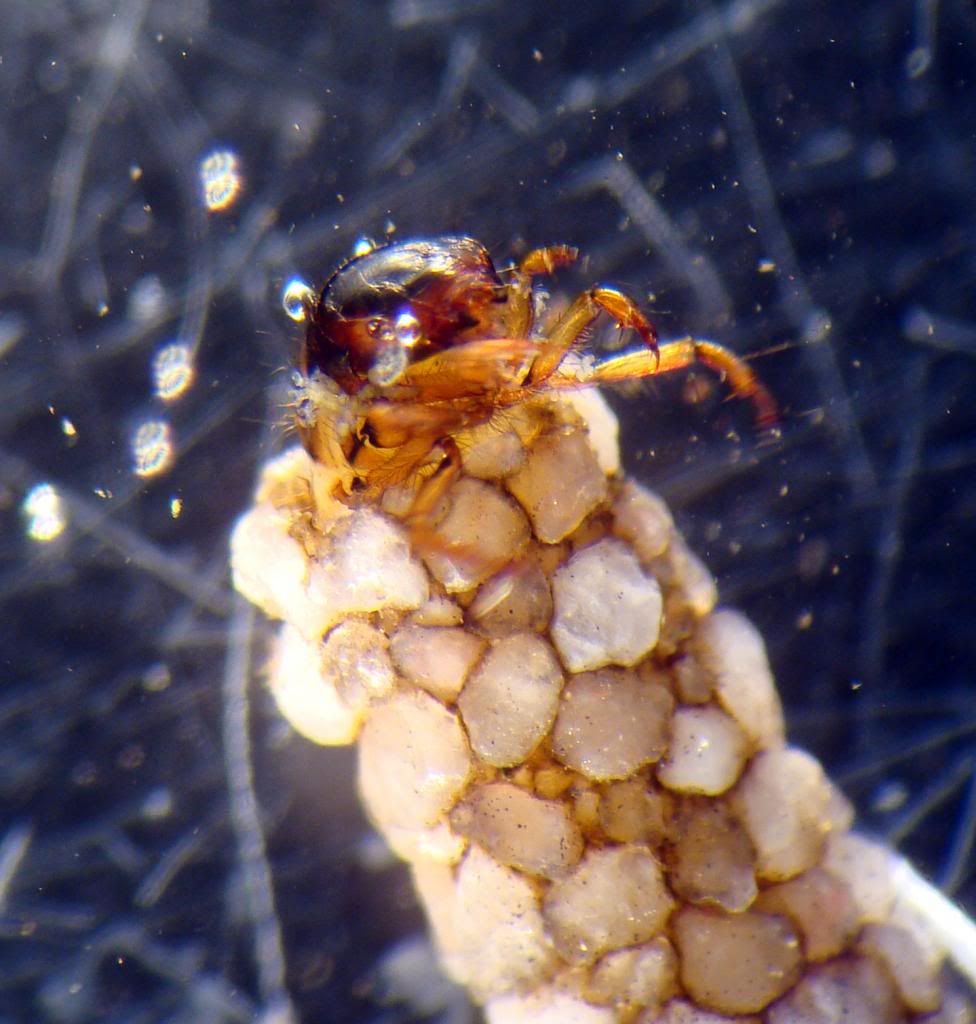 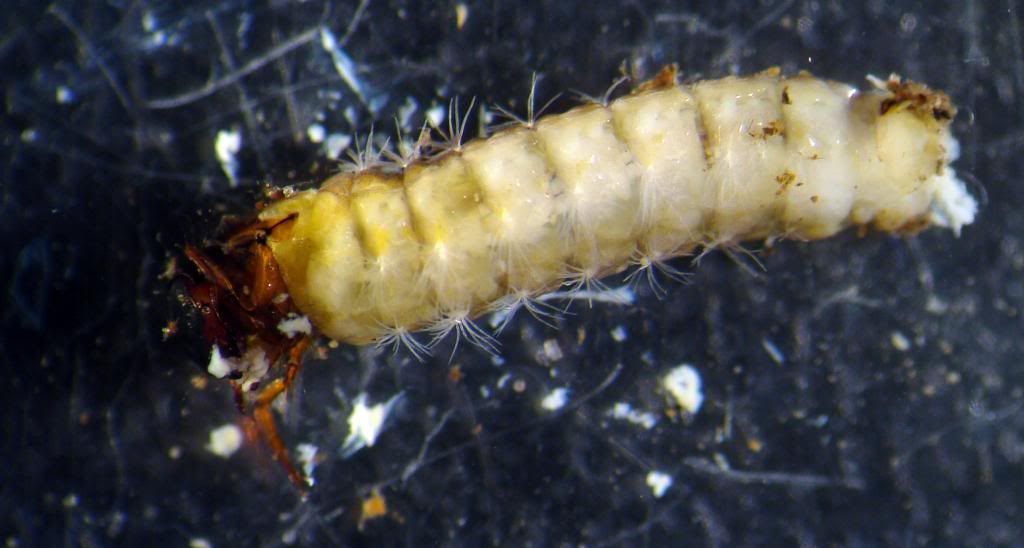 | |
| Oldredbarn | February 6th, 2013, 11:02 pm | |
| Novi, MI Posts: 2608 | Think they have camo ability like octopus, etc? If so it should drive the flytiers crazy speculating on that. Thanks Dave! I'll never sleep now...To the vice there Spence...You only need 2 trillion more flies...:) Spence | |
| "Even when my best efforts fail it's a satisfying challenge, and that, after all, is the essence of fly fishing." -Chauncy Lively "Envy not the man who lives beside the river, but the man the river flows through." Joseph T Heywood | ||
| Martinlf | February 7th, 2013, 7:26 am | |
Moderator Palmyra PAPosts: 3233 | Easy, Spence, that fly caddy can carry only so much. You've heard of the straw that broke the camel's back, right? | |
| "He spread them a yard and a half. 'And every one that got away is this big.'" --Fred Chappell | ||
| PaulRoberts | February 7th, 2013, 11:17 am | |
| Colorado Posts: 1776 | Thanks Dave. Excellent general info to keep in mind. Eric's individuals have used pale sand to construct their cases. And it's likely that this early in the year algae hadn't grown much yet. And these individuals were probably buried somewhat in the substrate? Were these kick sampled? But the larvae in the images are pale too. Since these guys have a two year life cycle, and spend most of it buried beneath the gravel I'm suspecting that these images are of young individuals that haven't acquired their green hue. That's just a guess, owing to my only (remember) seeing green larvae, and the adults having olive-green abdomens. I have Psilotreta larval "peeking caddis" ties in my boxes and I gave them all green thoraxes. Suppose it's possible that Eric's population are pale all the way through. | |
| Oldredbarn | February 7th, 2013, 12:10 pm | |
| Novi, MI Posts: 2608 | Easy, Spence, that fly caddy can carry only so much. You've heard of the straw that broke the camel's back, right? Thanks for looking out for me Louis! :) I'm sweating on my walk to the river, as it is... Spence | |
| "Even when my best efforts fail it's a satisfying challenge, and that, after all, is the essence of fly fishing." -Chauncy Lively "Envy not the man who lives beside the river, but the man the river flows through." Joseph T Heywood | ||
| Crepuscular | February 7th, 2013, 12:36 pm | |
| Boiling Springs, PA Posts: 923 | The samples were collected by hand. All were above the substrate and I even have some that were in their pupal enclosure. The first set of pictures were of samples I collected on March 20th, 2012. The second couple of photos were of a specimen I collected yesterday. Again above the substrate and on the underside of a grapefruit-sized rock of that white quartz. Interestingly there were only larvae under those white quartz rocks and none under similar sized sandstone rocks. The one that I photographed yesterday does have a little bit of a green hue to it but definitely not a dark olive color. yesterday's samples were approximately the same size as the ones collected from last March. I did not find any pupae yesterday. | |
| Entoman | February 7th, 2013, 1:39 pm | |
| Northern CA & ID Posts: 2604 | Paul, Good point about Psilotreta species digging into the substrate. That's the suspected reason for their heavy-duty case construction. I believe this behavior is a warm season one though and that this time of year they are out on top happily grazing as Eric reported. Eric, Your preserved samples are in excellent condition, I couldn't tell. What's your procedure and what do you use? | |
| "It's not that I find fishing so important, it's just that I find all other endeavors of Man equally unimportant... And not nearly as much fun!" Robert Traver, Anatomy of a Fisherman | ||
| Crepuscular | February 7th, 2013, 2:46 pm | |
| Boiling Springs, PA Posts: 923 | The same thing I use for myself, pure EtOH. Not the denatured stuff. Just kidding about myself, I can still see...but I just put the individual specimens in the ethanol. This usually comes after they have been rinsed and put in ethanol initially when collected. They just get transferred into fresh for retention. I then recycle the old and use it in the field. It gets a little yellow from the chlorophyll after a while but it works for field use. If I have the luxury of being able to get photos of live specimens, meaning, they wont be in water too long from field to lab, then I just keep them in water from the collection site and then transfer to ethanol in the lab. | |
Quick Reply
You have to be logged in to post on the forum. It's this easy:
Related Discussions
| Title | Replies | Last Reply |
| Re: A couple of Odontoceridae - Marilia and Nerophilus (11 more) In the Photography Board by Millcreek | 4 | Oct 29, 2014 by Millcreek |
| Re: Emerging Isonychia nymph In General Discussion by Troutnut | 2 | Oct 7, 2006 by Troutnut |
| Re: Need help.. In Fly Tying by Nightangler | 1 | Sep 16, 2006 by GONZO |
| I. hansoni In Isogenoides hansoni Stonefly Nymph by GONZO | 0 | |
| Re: Another sulphur for comment In Female Ephemerella invaria Mayfly Dun by Martinlf | 1 | Aug 21, 2007 by Gene |
| Ecdyonurus nymphs In Ecdyonurus criddlei Mayfly Nymph by Jmw975 | 0 | |
| Re: Need help identifying and insect by discription only In the Identify This! Board by Aszat | 2 | Nov 4, 2012 by Aszat |
| Re: comparison In General Discussion by Blackghost | 4 | May 3, 2009 by Wbranch |
| Re: Caddisfly ID In Psilotreta labida Caddisfly Larva by Taxon | 1 | Apr 3, 2007 by GONZO |
| Re: Great Autumn Brown Sedges on Potomac River In the Caddisfly Genus Pycnopsyche by BrettB | 3 | Oct 3, 2008 by GONZO |
Troutnut.com is copyright © 2004-2024 Jason
Neuswanger (email Jason). See my FAQ for information about use of my images.
 privacy policy
privacy policy






